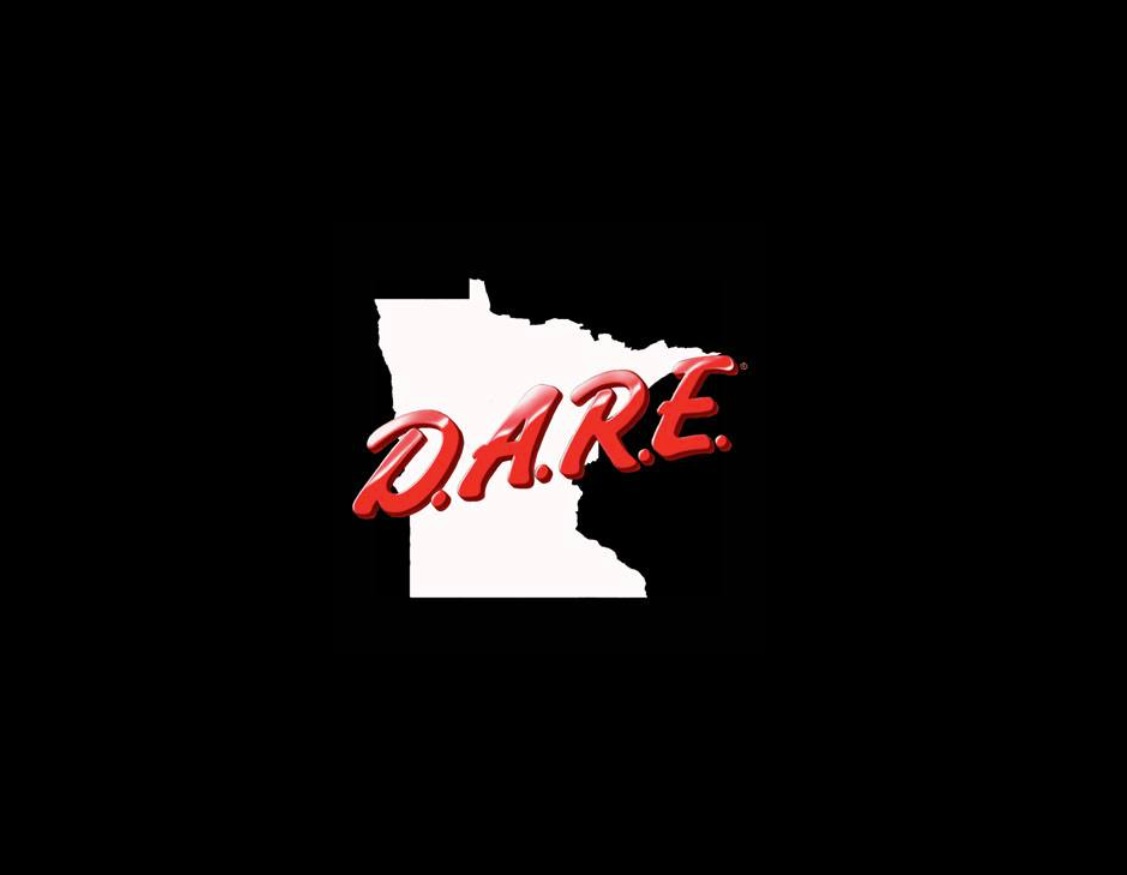When a press release about 16 new Minnesota D.A.R.E.-trained cops arrived in the Racket inbox this morning, it spurred a universal reaction inside our tiny newsroom: D.A.R.E. is still around?
Thirty-two years later, yes, the anti-drug program maintains a statewide presence in around 350 schools, D.A.R.E. Minnesota executive director Kathi Ackerman tells us. In 2019, 249 D.A.R.E. officers administered D.A.R.E. teachings to 77,188 D.A.R.E. students, most of them kindergarteners through 6th graders. (D.A.R.E., incidentally, stands for "Drug Abuse Resistance Education" and not—or as well as?—"Drugs Are Really Excellent.")
"We had many officers leave law enforcement and are currently working on replacing them," Ackerman says, noting that school closures during the pandemic further dinged D.A.R.E. "With the renewed push for community policing, many departments and schools are also looking at re-starting programs."
You're forgiven if, like us, you considered D.A.R.E. to be a relic of the still-horrific War on Drugs, especially considering the program was launched in 1983 by the most notoriously racist police force in the country and championed by Nancy "Just Say No" Reagan. Its Minnesota web presence certainly recalls a bygone internet. While its footer trademark date is just 12 years old, the site feels like a GeoCities fossil, complete with live-scrolling updates from 2020 and a "LATEST NEWS" tab that delivers a 404 error. It's worth clicking around to see for yourself.
Reports of D.A.R.E.'s decline date back to the late '90s. Locally, the the Rosemount-Apple Valley-Eagan school district ditched D.A.R.E. in 2010, MPR reported, a move that freed up $50,000 among its 18 elementary schools. That fiscal pain is reflected in annual reports from the nonprofit that runs our state's arm of the program, D.A.R.E. Minnesota, Inc. In 2015, the organization reported $605,796 in fundraising. That total plummeted to $151,081 by 2019, per the most recent IRS figures. Savings weren't the only thing that motivated the districts that spoke with MPR in '10. They "questioned its overall effectiveness," a suspicion that has been confirmed by decades of studies.
At the peak of D.A.R.E. mania in the early '90s, 75% of U.S. schools shoveled around $700 million annually at the program, according to American Addiction Centers. It didn't work: A study from the American Psychological Association found no measurable impact in reducing drug use, while a University of Illinois study found D.A.R.E. kids were more likely to use drugs.
In 2008, D.A.R.E. America shifted to an evidence-based curriculum called Keepin’ it REAL (KIR). Its "How Do You Do, Fellow Kids?" branding might seem suspect, but its results are documented, according to... D.A.R.E. America CEO Frank Pegueros via MinnPost in 2016. Newer areas of emphasis include cyberbullying, suicide prevention, vaping, and opiates. Even mascot Leon the Lion's tone has softened from its reefer madness heyday. (That propaganda element isn't lost entirely; in 2015 D.A.R.E. re-published a satirical report of gummy weed deaths sweeping Coachella.)
At a base level, however, some critics take issue with the idea of cops who've undergone two weeks of "intense and comprehensive" training doing the work of public health and prevention specialists. "We are finding a lot of the departments that dropped D.A.R.E… have no relationship between their communities and police," D.A.R.E.'s Ackerman told the Star Tribune in 2016. (Minneapolis would qualify, since only 8% of MPD cops live in the city they police.)
Nationwide, 81 percent of young people believe major change is needed to policing, per Gallup polling, and, in Minnesota, just 21% of Black people express much trust in cops, APM Research Lab found. So the problem might not be D.A.R.E.'s revamped messaging. It might be the messenger.
"Especially with teens, you've got to be credible," Michael Slater, an anti-drug campaign expert at Ohio State University, told Vox in 2014. "They've got great BS thermometers."







